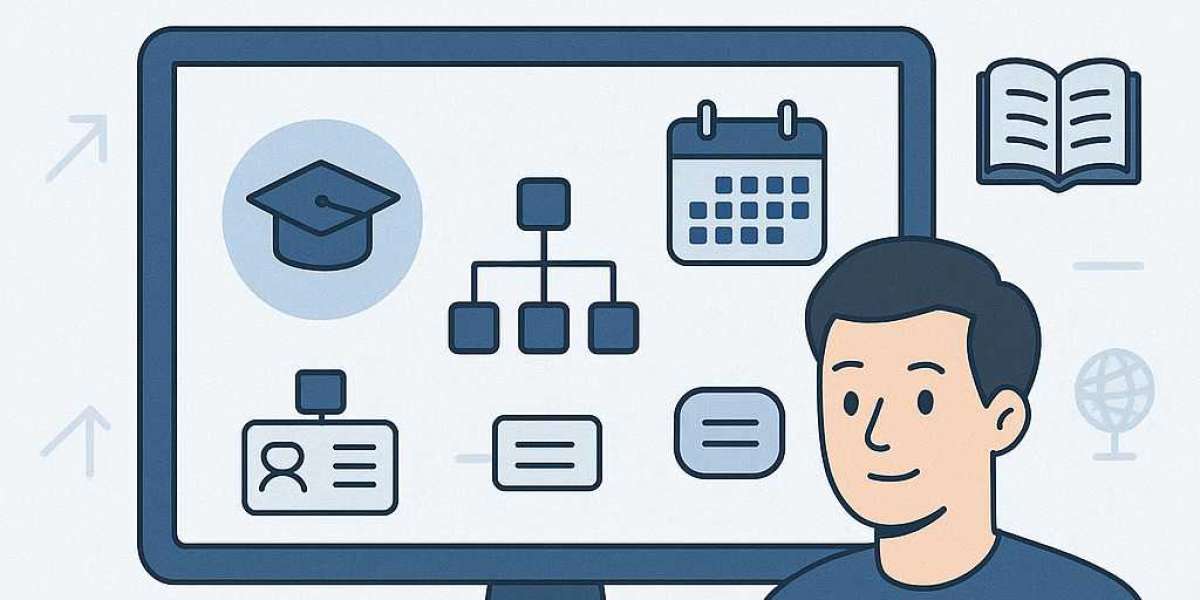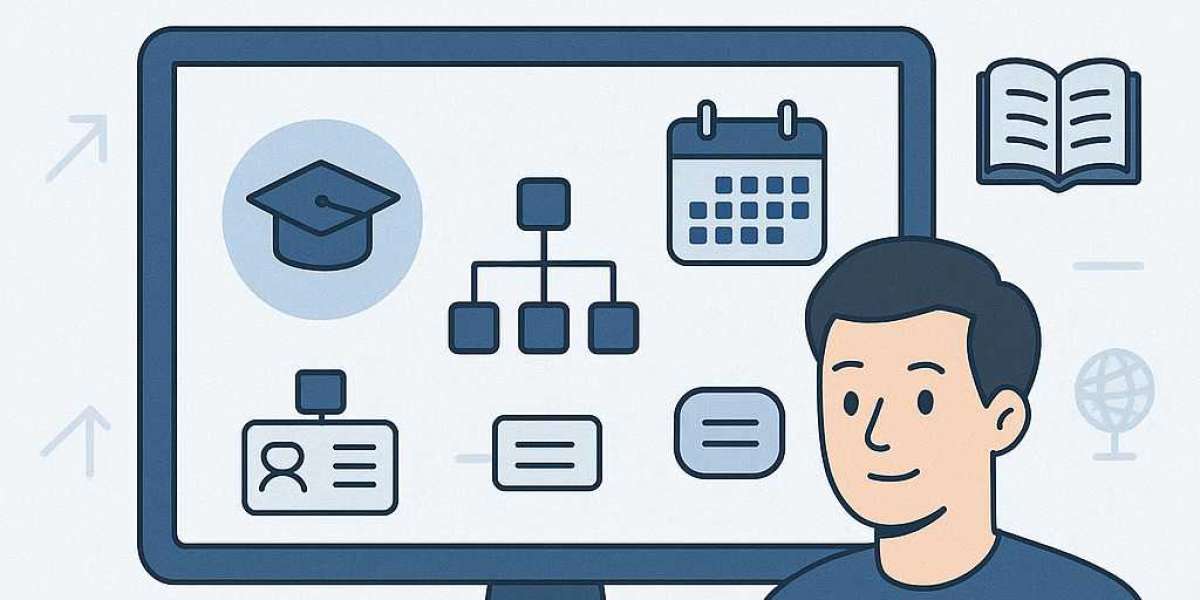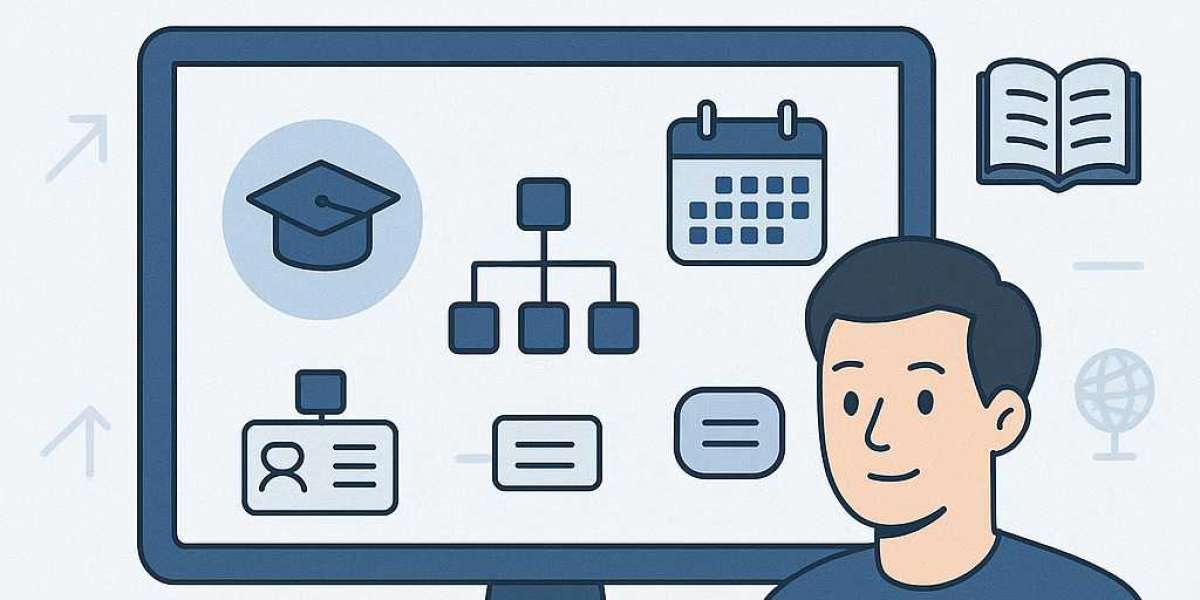In an age where data drives everything from corporate strategy to customer service, educational leadership is no exception. Principals are no longer just academic heads; they are also operational leaders, community builders, and data-informed decision-makers. To effectively manage these expanding responsibilities, many have turned to school ERP software—a powerful solution designed to centralize information, simplify administration, and support better decision-making in less time.
What Is School ERP Software?
School ERP (Enterprise Resource Planning) software is a comprehensive digital platform that connects various departments within a school—admissions, academics, payroll, transportation, inventory, and more—under a single system. Think of it as the digital backbone of a school’s operations, offering principals real-time insights into everything from student performance to financial health.
This kind of centralized access is a game-changer. No more digging through spreadsheets or chasing down reports from multiple departments. Instead, principals can spend more time focusing on leadership and less time on paperwork.
Why Principals Are Embracing ERP Solutions
Real-Time Decision Making
With ERP software, decisions that once required days—waiting for data from multiple sources—can now be made in minutes. The platform provides up-to-date analytics dashboards, allowing principals to monitor student attendance, teacher performance, budget allocations, and even inventory levels at a glance.
This capability is especially useful during critical times like exam seasons, school inspections, or budget planning. Immediate access to reliable data helps principals act swiftly and strategically.
Streamlined Administrative Workflows
Manual processes slow down even the most efficient schools. With ERP tools automating repetitive tasks like attendance tracking, fee collection, and scheduling, principals can reallocate time and energy toward innovation and policy development. This automation doesn't just benefit administrators—it also improves the day-to-day experiences of students and teachers.
For example, when student data is updated in one module (like grades), it syncs across all relevant sections, saving countless hours and reducing the risk of errors.
Enhanced Communication and Transparency
One of the unsung advantages of school ERP software is the communication framework it provides. Principals can instantly share announcements with teachers, coordinate meetings, or even message parents—all from within the same system.
Better communication means fewer misunderstandings, improved parent engagement, and a school culture where everyone feels informed and involved.
Data-Backed Leadership
Data-driven leadership isn't just a trend—it’s becoming the norm in schools aiming for long-term success. ERP platforms offer customizable reports and data visualizations that help principals track KPIs like student retention rates, academic performance, and teacher productivity.
Armed with this information, school leaders can make well-informed decisions about hiring, curriculum updates, or even facility upgrades. It's leadership with a long-term lens.
What to Look for in a School ERP System
Every school has different needs, but certain features are universally beneficial for principals:
User-Friendly Dashboards: Easy navigation is key for busy administrators.
Cloud-Based Access: Secure, remote access ensures that principals can manage operations even outside school hours.
Custom Reporting Tools: Tailored insights for academics, finances, and staff.
Compliance and Security: Ensure the system adheres to data protection regulations (such as FERPA or GDPR).
Training and Support: Choose a vendor that offers strong onboarding and responsive customer service.
Real-World Impact
A 2022 report from Education Technology Insights revealed that schools using ERP systems saw up to a 40% improvement in administrative efficiency within the first year of implementation. Principals in both public and private institutions reported higher satisfaction due to reduced stress and better oversight of daily operations.
In one case, a mid-sized school in the Philippines adopted an ERP platform to manage hybrid learning during the pandemic. Within months, the school reported better engagement from parents, improved attendance tracking, and smoother transitions between online and in-person classes.
Common Concerns—and How to Address Them
Despite its benefits, some principals hesitate to adopt ERP software due to concerns over cost, complexity, or resistance from staff.
Cost: While implementation may seem costly, many ERP vendors offer scalable pricing models tailored to different school sizes. The long-term savings in operational efficiency often justify the expense.
Complexity: Modern ERP systems are designed with usability in mind. With proper training, staff members adapt quickly.
Staff Resistance: Change management is crucial. Involving teachers and department heads early in the adoption process can ease the transition and increase buy-in.
The Principal’s Role in ERP Success
Ultimately, the success of an ERP system hinges on leadership. Principals play a key role in fostering a tech-forward culture, setting expectations, and ensuring ongoing usage across departments. By leading from the front and embracing the platform as a strategic asset, principals can elevate the entire school’s performance.
Conclusion
The educational landscape is evolving, and with it, the role of the principal. No longer just academic overseers, today’s school leaders are expected to manage resources wisely, track performance rigorously, and make decisions with clarity and speed. School ERP software is the tool that enables this shift, offering a smarter, more efficient way to lead.
As more schools digitize their operations, principals who adopt these systems early are better positioned to innovate, inspire, and improve the educational experience for every stakeholder involved.










